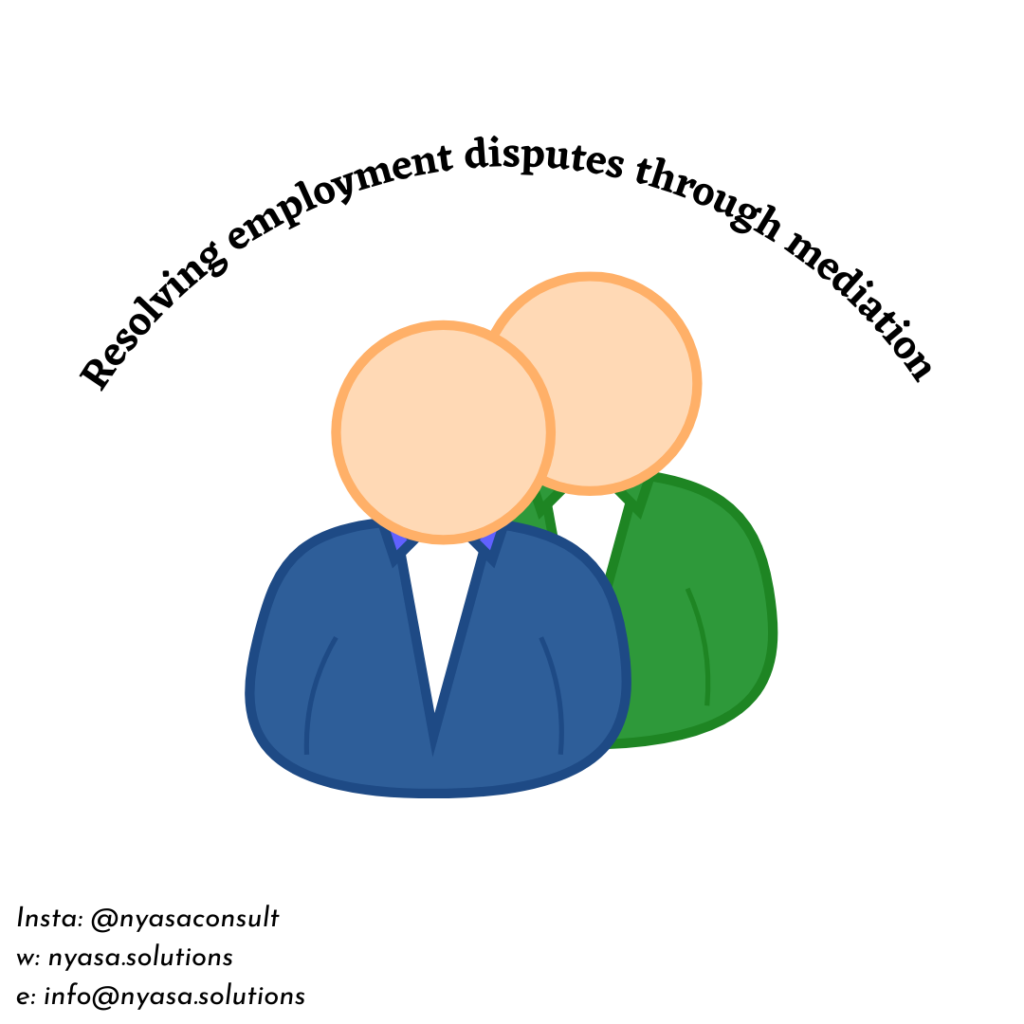Conflicts in the workplace are not uncommon. Of course, you don’t want to use mediation for every “issue” in the workplace. That is not necessary. Sometimes a little advice about the conflict situation is enough.
We are in favor of organizations becoming self-reliant when it comes to conflict mediation. The use of professional mediation to resolve workplace disputes is the last resort. There are many other solutions within your reach to prevent a (bigger) dispute.
Still, resolving workplace disputes through mediation can sometimes be the only option. By deploying the right tools in time, you save a lot of time and money and ensure that a dispute can be prevented or resolved in a sustainable way.
6 tools in the event of an (imminent) dispute
You want people to work together optimally. It is therefore important to intervene/deescalate in time in the event of tensions in the workplace. We can help you with this at any point in the escalation process. From preventing tensions and solving minor irritations to solving major disputes.
You can use the following tools in the event of a dispute:
- mediation;
- conflict coaching;
- managing conflict through training;
- exit mediation.
How does the de-escalation happen in the event of a conflict?
The aim of mediation is to have the parties involved move one step higher on the ladder (de-escalation) to ultimately resolve the conflict. Based on the attitude and behavior, an estimate can be made of where the conflicting parties stand on this escalation ladder. This can give a good indication of which intervention can be used or advised.

9 Levels of Conflict Escalation according to Friedrich Glasl.
Once you have reached step 9, it is no longer likely that exit mediation will be used. If the parties involved are still in the rational phase, conflict coaching or contacting a mediator can be a good starting point to reach a solution to the conflict.
Getting someone to take a step up the escalation ladder requires expertise.
Nothing is more difficult than changing (one’s own) behavior. A conflict that manifests itself in behavior and attitude is a clash of truths that usually do not fit into one story. Pride or the sincere belief in one’s own truth often makes it difficult to take a step up the escalation ladder.
In a mediation process, mutual understanding and appreciation are necessary to reach a solution. Sometimes an excuse or being open to new information is enough.
This is quite difficult for a manager or HR officer to achieve. Moreover, they also have other priorities to deal with within the organization. This often makes it difficult to enter a mediation process objectively and to remain impartial.
The deployment of a professional mediator not only guarantees objectivity but also neutrality and impartiality.
In 5 steps to successful collaboration in the workplace
A mediator always believes in the self-reliance of organizations. Also, when it comes to mediation in workplace disputes, there may be times when professional workplace mediation is the last resort, but before that happens, we provide the necessary tools to help you get started independently. This allows you to resolve disputes without the intervention of the mediator, saving you a lot of time, money, and effort.
Unfortunately, there are also workplace disputes where self-reliance is not an option. For example, when there is a threat of legal action. Or when the dispute has a lasting impact on the composition or productivity of the entire team. In that case, talking to a mediator could be the right step.
Let’s look at the step-by-step plan for successful collaboration in the workplace.
- Step 1. Prevention
We provide businesses with the right knowledge and skills to prevent workplace conflicts. We do this through training courses and the step-by-step implementation of conflict management. As a result, you learn to recognize tensions in the (digital) workplace in a timely manner and you overcome conflicts that threaten to arise from this.
- Step 2. Resolve minor disputes with advice
Prevention is not always possible. When you’re dealing with an emerging dispute within your team, you need to act as quickly as possible. Sometimes that’s easy, but there are times when you don’t immediately know how to put your finger on the sore spot. In that case, you can use our advice for conflict mediation or conflict coaching.
- Step 3. When emotions run high
Are you unable to quell a dispute in time? Then there is a good chance that emotions will run high. In that case, we also recommend that you call for advice. We can usually quickly determine from your story whether mediation is necessary or whether conflict coaching is better suited to your situation.
- Step 4. When the situation becomes untenable
Unfortunately, it also happens that a dispute becomes untenable and that, for example, legal action looms large. At such a moment you are no longer able to act independently, and professional conflict mediation is the only solution.
- Step 5. Exit Mediation if a solution is no longer an option
Is it no longer possible to keep the employee within the organization and to restore teamwork? Then you only have one solution: Exit Mediation. This reduces the chance of long-term resentment and rancor or even going to court. With Exit Mediation we help step by step to let those involved say goodbye in a good way.
Get in touch
Do you have a dispute within your organization? We are happy to talk to you and the other person if you need help with miscommunication, division, illness, dismissal, and more. Get in touch here.

